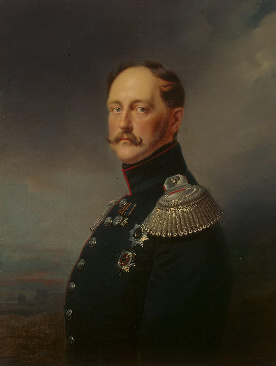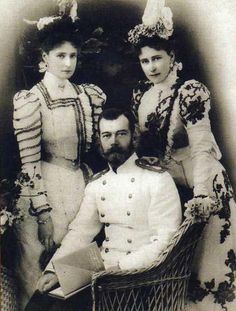History Part III
Part III: 1800 – 1900
The Order entered the 19th century as a revitalized strong entity.
Tragedy struck the newly reconstituted entity in 1801. The Emperor for
political reasons was assassinated, and his son Alexander I became
emperor. The new Emperor did not wish to become the Order’s Grand Master
but remained steadfast as its Imperial Protector. The young Emperor
appointed Bailiff Marshal Count Nicholas Soltikoff as the Lieutenant of
the Order [proclamation]. Emperor Alexander I like his father wished to regain the
island of Malta for the exiled knights. The Treaty of Amiens signed in
1802 stipulated that the island be returned to the knights. In order to
expedite the return to the island the parties agreed to the appointment
of a new Grand Master by the Pope from a list of candidates submitted by
the surviving priories.
After a complex and convoluted process in which a threatened pontiff,
Pius VII, a scheming Bonaparte and an exiled Italian group meeting in
Sicily ratified the Pope’s candidate, Bailiff Giovanni Tommasi, as the
Grand Master in 1803. Tommasi established a seat of power in Catania but
lived till only 1805. The less than forty knights in Catania elected the Bailiff Giuseppe Caracciolo dei Marchese di
Sant’Eramo, as Grand Master. Caracciolo was recognized by the Russian Emperor who granted
him a pension of 12,000 rubles from the reveries of the Russian Grand
Priories. However, his Grand Mastership was meaningless in the light of
the continuing battle for control of Europe fought between Napoleon and
other European countries.
The Order almost ceased to exist in the West and entered a period in
which the western priories were decimated. The final exile of Napoleon
and the Congress of Vienna gave some stability to the western Order. The
Order was restored in various states but under local papal or royal
patronage and control. In Rome, the Grand Priory of Italy was restored
in 1816 but as a source of revenue for a curial cardinal. The Order in
the West was governed loosely and not well by a series of Lieutenants.
Other Orders arose from the scattered fragments left by Napoleon. The
19th century was the grand age of Romanticism, and the tales of knights
and knightly Orders were in popular mind. In Protestant Prussia, the
Grand Bailiwick of Brandenburg was converted into a civic Order of Saint
John in 1812. By 1852 it was restored as a Grand Bailiwick, and known
as the Johanniter under the House of Hohenzollern. The king’s brother
Prince Charles was its Herrenmeister. In England, the Priory of England
was revived with the Anglican chaplain of King George IV as Prior.
The priory eventually obtained the recognition of the British Crown. In
1888, it received a royal charter as the Venerable Order of Saint John.
By 1890 the Grand Prior was the Prince of Wales [King Edward VII].
In Russia, the Order took on a more Imperial and Russian character.
The seat of the Order, the Worontzoff Palace became the training school
for the Russian military and the Imperial Corps des Pages. Emperor
Nicholas I, at his own expense, restored the Orthodox and Catholic
chapels in the palace. There are many proofs of its continuation. In
1841, Prince Tufiakin, a Hereditary Family Commander, was expelled from
the Order for unacceptable behavior. In 1844, an heraldic history,
Ordres de Chevalerie et Marques d’Honneur, recorded:
Le deux grand prieurés de Russie conservant encore en apparence leur
constitution et leur forme anciennes. Sous Ia protection de !’empereur,
sous sa haute direction dans le chapitre, us continuent la chaine du
veritable ordre de Saint-Jean, en ne conservant avec le chapitre de Rome
que des liens très-relâchés …. il est divisé en deux grand prieurés,
Fun pour les chevaliers de la communion grecque, l’autre pour ceux de la
communion latine. Le premier possède 98 commanderies de chevaliers, 17
fondées sur le revenu de la poste, et 20 de fondations privées…. Ii y a
aussi des grand’croix et des petites croix pour les dames.
The preceding passage was loosely translated and published in the
1858 work by the famed genealogist and royal herald Sir Bernard Burke,
The Book of Orders of Knighthood;
The two Russian Grand Priories still preserve the appearance of the
old Constitution and form, under the patronage of the Emperor, who is
head of the Chapter. Its connection with the Chapter of Rome is of a
very loose character…..the whole is now divided into two Grand
Priories, for the Knights of the Greek and those of the Roman Catholic
confession. The former now counts ninety-eight Commanders [Burke does
not repeat many of the other statistics from the above French entry]…
.There are also grand and small crosses for female members.

From these two texts, certain assumptions can be made. The first assumption is that
the Order existed if not thrived in Russia till the middle of the 19th
century. This dating dismisses the popular belief founded on a
misunderstanding of the original Russian decrees that the Order was
suppressed in Russia by the Lazareff affair of 1817. More correctly, the
Lazareffs had received decorations from Serra Capriola from the Order
of Saint John outside of Russia. By that date the Russian court only
recognized those decorations granted by the Russian Order as permissible
for display and wearing at Court.
Secondly and most importantly for the character of the Order,
although the external forms of the Order seemed to be preserved in
Russia the Order had changed from its western origin. Both entries
mention the presence of female members. In the West women were still
strictly barred from what was still a celibate and masculine Order. If
any women were involved in the western Order, they served in the
capacity as religious nuns.
A third interesting statement is the recognition that the ties with
the western Order were very weak. A fourth statement, often overlooked,
describes the source of revenue for the Order in Russia, partly from the
revenue of the postal system and partly from private foundations. We
may safely assume that those privately funded units must have been the
hereditary family commanderies, for at their creation by Emperor Paul,
such was the requirement. From another selection in Burke we are told
that the Emperor was the head of all Orders in Russia, except for the
female one of Saint Catherine, which was nominally under the Empress’s
protection.
What the Order did in Russia is not specified. If it was similar to the
other knightly orders of Imperial Russia, such as the Saint Stanislaus,
Saint Alexander Nevesky, Order of Saint George, etc., they served as
organizations for honored and important members of the Court and
military. They served principally as a support for the monarchy and the
country. The role of the Russian Order and the training of the future
leaders of the state, as well as, the Imperial Corps des Pages has been
stated by Russian writers but has been dismissed in the western
literature.
The Order is recorded in Russian sources. Membership is confirmed in the
Imperial Court Almanacs of 1829, 1835, 1847, 1853, 1856, and 1914.
Emperor Alexander II was frequently shown wearing the Grand Cross of the
Order, and as Head of the Russian Grand Priories. He raised Prince
Alexander Vassilievitch Troubetzkoy to the rank of Hereditary Commander
on October 19, 1867. Emperor Alexander III allowed the crown of the
Grand Master which had been created for Emperor Paul to be used at the
funeral rites of his father, Alexander II, and it was also present at
his own coronation. Emperor Alexander III had the portrait of Emperor
Paul I as Grand Master given a special place of honor at the Gatchina
Palace. He is also pictured wearing the badge of the Order in the
painting by Repin, An Audience Given by Alexander III to the Volst Elders, 1886, Tretyakov Gallery, Moscow, as well as in several other portraits.
Emperor Nicholas II was equally involved with the Order. Count Serge D.
Cheremetieff was confirmed in 1899 as a Hereditary Commander. An 1897
work on the Maltese Order by Leon de la Briere mentioned the independent
Russian Order of Saint John but added that it was not on good terms
with the Roman Grand Master. However, Emperor Nicholas II maintained
cordial relations with the then Grand Master of the Roman Order, for he
sent them the copy of the famous painting of Emperor Paul I as Grand
Master. This imperial gift continues to hold a place of honor in the
present international headquarters of the Roman Order and appears in its
official photographs. He honored family members, including Empress
Alexandra and the Grand Dukes Sergei and Paul, with Bailiff Grand Cross.
A document survives from 1912 that Count Vladimir Armfeld could wear
the decoration of the Order and it would be passed to his son. Officers
graduating from the Imperial Corps des Pages whose seat was in the
Orders Palace, were given the right to wear a Cross of the Order on a
round gold plaque which commemorated in 1902 the one hundredth
foundation of the Corps.
